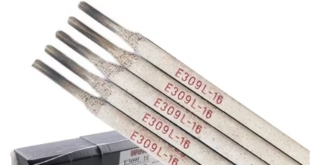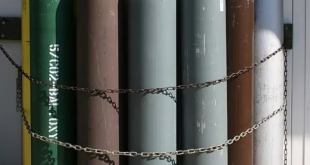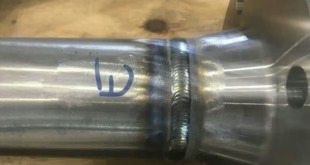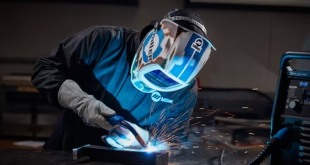Introduction
In the world of welding, precision and technique are paramount. One crucial aspect that significantly affects welding quality is the choice between test positions and actual positions. These two terms might seem similar, but they hold distinct importance in welding practices. This comprehensive guide will delve into the differences, benefits, and considerations when deciding between welding test positions and actual positions. Whether you’re a novice welder or a seasoned professional, understanding these concepts is essential for achieving optimal welding results.
Welding Positions: Test Positions vs. Actual Positions Explained
Test Positions: Unveiling the Basics
When we talk about test positions in welding, we refer to specific orientations in which a welder performs a test to evaluate their welding skills. These positions are designed to challenge welders by simulating real-world scenarios. Common test positions include:
1G Position (Flat Position)
In the 1G position, the weld is performed on a flat surface, and the welding is done from above. This is considered the easiest position for welding, as gravity helps keep the molten metal in place. It serves as a foundational test position to assess a welder’s initial skills.
2G Position (Horizontal Position)
The 2G position involves placing the weld joint horizontally, and welding is done in a horizontal direction. This tests the welder’s ability to manage the molten metal and prevent it from sagging due to gravity. It challenges the welder’s control over the weld pool on a horizontal plane.
3G Position (Vertical Position)
In the 3G position, the weld joint is placed vertically, and welding is performed from the bottom upward. This is a more challenging position as the molten metal tends to flow downwards. It tests the welder’s skill in maintaining proper penetration and bead shape while fighting against gravity.
4G Position (Overhead Position)
The 4G position involves placing the weld joint overhead, and welding is done from the bottom side. This is one of the most challenging positions, as gravity works against the welder, making it difficult to control the molten metal. It requires a high level of skill and control to prevent defects.
5G Position (Inclined Position)
The 5G position tests a welder’s skill in welding on an inclined joint that may be positioned at an angle between vertical and horizontal. It combines the challenges of both vertical and horizontal welding, testing a welder’s adaptability and versatility.
Actual Positions: Adapting to Real-World Requirements
Actual positions in welding encompass the various angles and orientations in which welding tasks are performed for real projects. Unlike test positions, actual positions directly affect the quality, integrity, and durability of the welds in practical applications. Common actual positions include:

Flat Position (F)
Similar to the 1G test position, welding in the flat position involves welding on a horizontal surface. This position is often used for joints that can be placed horizontally or where the weld can be performed from above.
Horizontal Position (H)
The horizontal welding position is used for joints that are placed horizontally, and welding is performed in a side-to-side manner. It simulates the challenges of welding on flat surfaces in real-world scenarios.
Vertical Position (V)
In the vertical position, the joint is placed vertically, and welding is performed from the bottom upwards. This simulates welding on vertical surfaces, which can pose unique challenges such as controlling the molten metal flow.
Overhead Position (O)
Welding in the overhead position is performed on joints located overhead. This can be quite challenging due to the need to control the molten metal against the pull of gravity. It requires precise technique to prevent defects.
Special Position (SP)
Special positions refer to orientations that are not covered by the standard positions mentioned above. These could include complex joint orientations, like pipe welding in different angles. Welders must adapt to these positions based on project requirements.
Comparison between Test Positions and Actual Welding Positions
Advantages of Mastering Test Positions in Welding Training:
- Foundation Building: Test positions provide a controlled environment for welders to build foundational skills, such as bead control and arc manipulation.
- Skill Assessment: Proficiency in test positions indicates a welder’s ability to execute welding techniques accurately and consistently, which is crucial for producing quality welds.
- Standardization: Test positions offer a uniform way to assess and compare welders’ skills, allowing for objective evaluation in certification programs.
- Confidence Boost: Mastering test positions can enhance a welder’s confidence and competence, preparing them for a range of welding challenges.
Limitations of Relying Solely on Test Position Proficiency:
- Lack of Realism: Welders skilled in test positions may struggle when transitioning to real-world welding scenarios due to differences in joint fit-up, material behavior, and external factors.
- Inadequate Adaptability: Welders focused solely on test positions may lack the adaptability required to handle diverse projects and unconventional welding situations.
- Performance Discrepancy: Proficiency in controlled positions does not necessarily guarantee the same level of skill across various orientations, potentially leading to inconsistent weld quality.
Discrepancies between Ideal Test Conditions and Real-World Welding Scenarios:
- Joint Preparation: Test positions often involve well-prepared joints, which might not reflect the challenges posed by imperfect fit-up in practical applications.
- Material Variability: Real-world projects can involve a wide range of materials with varying properties, affecting how welds behave in different positions.
- Environmental Factors: Wind, humidity, and other environmental factors can impact weld quality in real-world scenarios but are typically controlled during testing.
Impact of Joint Preparation, Material Properties, and Environmental Factors on Actual Welding:
- Joint Fit-Up: Real-world joints might require adjustments or modifications that aren’t encountered in controlled test positions, influencing welder technique and strategy.
- Material Behavior: Different materials respond differently to welding in various positions, affecting penetration, fusion, and overall weld quality.
- Environmental Challenges: Conditions like wind, humidity, and temperature fluctuations can affect arc stability and weld pool dynamics, demanding adaptability from welders.
Training and Skill Development
Role of Welding Schools and Training Programs in Teaching Different Positions:
- Skill Diversity: Welding schools play a vital role in exposing students to a variety of welding positions, ensuring they are prepared for real-world challenges.
- Technique Instruction: Trained instructors guide students in learning the specific techniques required for each position, helping them understand the nuances of bead control, electrode angles, and more.
- Industry Standards: Training programs align with industry standards, ensuring that graduates are well-versed in the positions commonly encountered in the field.
Importance of Hands-on Practice in Controlled Environments for Test Positions:
- Foundational Skills: Controlled practice in test positions allows beginners to develop foundational welding skills before moving on to more complex scenarios.
- Skill Refinement: Aspiring welders refine their technique, speed, and control through repeated practice, increasing their confidence and accuracy.
- Assessment Preparation: Practice in controlled environments readies students for welding certifications that often include assessments in specific test positions.
Simulating Actual Welding Conditions to Bridge the Gap between Test and Real Positions:
- Realistic Training: Effective welding programs strive to simulate real-world conditions as closely as possible, helping welders transition smoothly from controlled positions to practical applications.
- Materials and Environment: Training with a variety of materials and in diverse conditions prepares welders for the unpredictable factors encountered in actual welding scenarios.
- Problem Solving: Simulating real conditions encourages critical thinking and creative problem solving, essential skills for addressing challenges in various welding positions.
Developing Comprehensive Skills to Excel in Both Controlled and Practical Welding Scenarios:
- Adaptability: Welders must adapt their techniques and approaches to achieve consistent quality across different positions, demonstrating mastery in all scenarios.
- Skill Transfer: Comprehensive training ensures that skills acquired in controlled settings can be effectively applied to real-world positions, maintaining weld quality.
- Continuous Learning: Welders committed to ongoing education and skill development remain competitive in the job market, staying updated with industry trends and best practices.
Best Practices for Both Welding Positions
Test Positions Best Practices
- Practice Regularly: Regular practice in test positions helps in mastering techniques.
- Focus on Technique: Emphasize technique precision over speed to ensure quality welds.
- Maintain Consistency: Strive for consistent bead shape and penetration in all positions.
- Control Heat Input: Monitor heat input to prevent distortion and defects.
- Evaluate Defects: Learn to identify and rectify common defects encountered in different positions.
Actual Positions Best Practices
- Understand Project Requirements: Thoroughly understand project needs to choose the appropriate position.
- Adapt Techniques: Modify techniques to account for gravity and joint orientation.
- Control Molten Metal: Manage molten metal flow to prevent defects and ensure proper fusion.
- Secure Joint Access: Ensure proper joint access and visibility in overhead and vertical positions.
- Inspect Regularly: Perform visual inspections to identify defects and irregularities.
Safety Considerations
Safety Risks Associated with Welding in Different Positions:
- Burn Hazards: Welding generates intense heat, and different positions expose welders to the risk of burns from molten metal, sparks, or hot surfaces.
- Welding Fumes and Gases: Welding in confined spaces or certain positions can lead to increased exposure to harmful welding fumes and gases, potentially causing respiratory issues and long-term health problems.
- Fire and Ignition: Welding sparks and molten metal can ignite flammable materials or gases in the surrounding environment, leading to fire hazards.
- Electric Shock: Welders working in overhead positions or near wet surfaces might be exposed to the risk of electric shock if not properly insulated.
- Strain and Fatigue: Welding in awkward positions can lead to physical strain and fatigue, increasing the risk of musculoskeletal injuries.
Precautions and Best Practices for Welders to Ensure Safety while Working in Various Positions:
- Training: Proper training is essential for understanding the specific risks associated with different positions and learning how to mitigate them.
- Hazard Assessment: Before beginning any welding task, assess the work environment, materials, and potential hazards.
- Proper Ventilation: Ensure adequate ventilation in indoor spaces to reduce the buildup of welding fumes and gases.
- Fire Prevention: Keep a fire extinguisher and fire-resistant materials nearby to quickly respond to any potential fires.
- Electrical Safety: Insulate welding equipment, use dry gloves, and avoid wet conditions to minimize the risk of electric shock.
- PPE Usage: Wear appropriate personal protective equipment (PPE) to shield against burns, sparks, fumes, and other hazards.
- Welding Screens/Curtains: Use welding screens or curtains to contain sparks and protect nearby workers from arc flash.
- Ergonomics: Maintain proper posture and technique while welding to prevent strain and fatigue, especially in challenging positions.
- Communication: Establish effective communication protocols between team members working in different positions to ensure everyone’s safety.
- Regular Breaks: Take frequent breaks to prevent fatigue, especially when working in physically demanding or uncomfortable positions.
Role of Personal Protective Equipment (PPE) in Mitigating Risks during Welding:
- Welding Helmet: A helmet with appropriate shade levels protects the welder’s eyes from harmful UV and infrared radiation.
- Welding Gloves: Heat-resistant gloves shield hands from burns caused by sparks and hot surfaces.
- Flame-Resistant Clothing: Wear clothing that is flame-resistant to prevent burns from molten metal and sparks.
- Respiratory Protection: Use respiratory protection, such as respirators, to safeguard against welding fumes and gases.
- Hearing Protection: Welding produces loud noise; wear ear protection to prevent hearing damage.
- Welding Boots: Sturdy boots protect feet from potential falling objects and hot metal.
FAQs
What is the primary purpose of test positions in welding?
Test positions serve the primary purpose of evaluating welders’ skills and techniques before they undertake actual welding projects. They offer a controlled environment to practice and refine welding proficiency.
How do actual positions differ from test positions in welding?
Actual positions are the orientations in which welding tasks are performed for real-world projects. They have a direct impact on the quality and integrity of the welds in practical applications.
Can welders solely rely on mastering test positions?
While mastering test positions is essential for skill enhancement, welders must also be proficient in adapting to actual positions. Real-world projects come with unique challenges that demand adaptability and problem-solving skills.
What factors should welders consider when choosing actual welding positions?
Welders should consider factors such as joint type, material thickness, site conditions, and project requirements when selecting the appropriate welding position. These considerations ensure weld quality and joint integrity.
How do test positions contribute to skill development?
Test positions provide a controlled platform for welders to practice various welding techniques. By repeatedly working in different orientations, welders enhance their muscle memory and technique precision.
Why is adapting to actual positions crucial in welding?
Adapting to actual positions is vital because real-world projects present diverse challenges. Welders need to consider gravity, joint access, and other factors to ensure successful welds.
Conclusion
In the realm of welding, the choice between test positions and actual positions holds immense significance. While test positions hone skills and techniques, actual positions demand adaptability and precision to ensure weld quality and joint integrity. By understanding the differences and benefits of each approach, welders can navigate welding projects with confidence, producing welds that meet structural standards and exceed expectations.
 Welding of Welders All about Welding and Welders
Welding of Welders All about Welding and Welders



